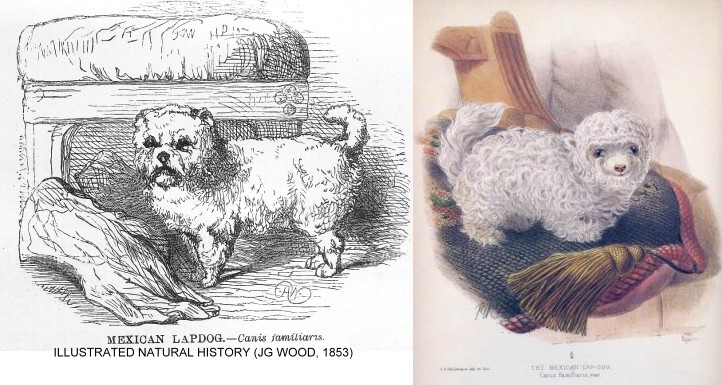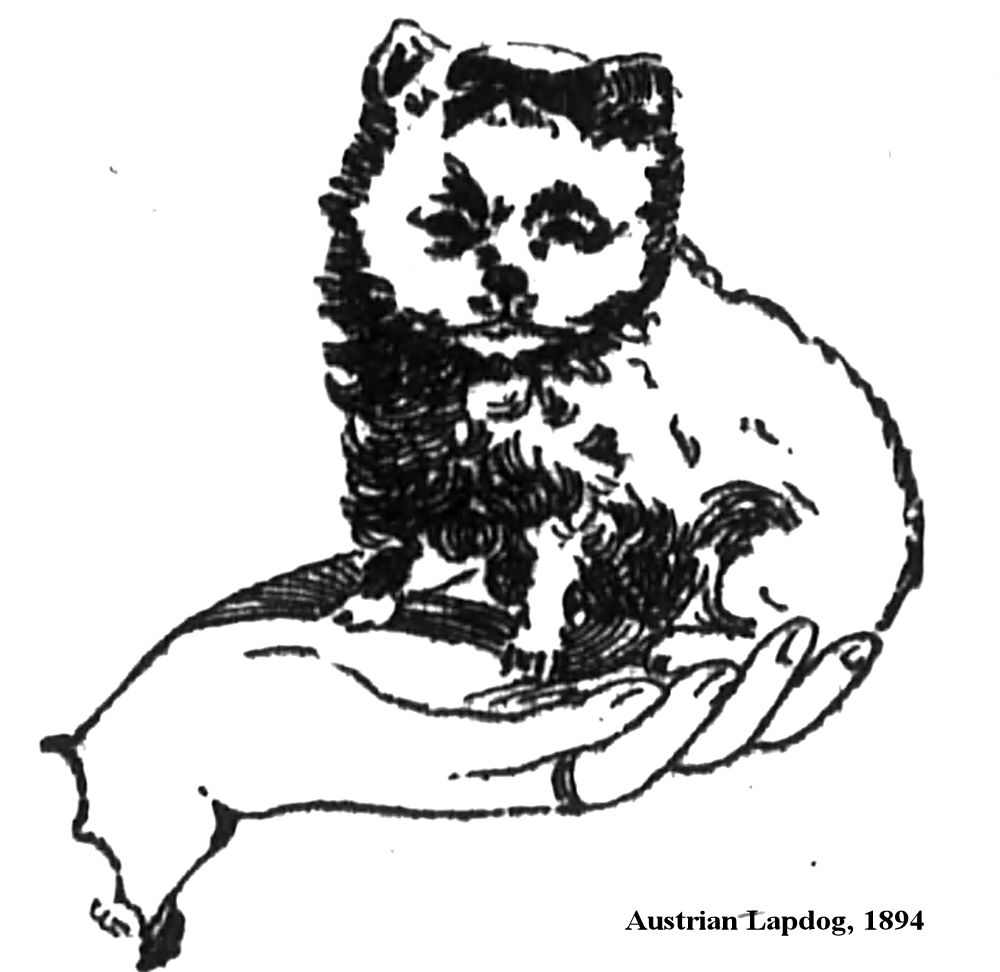|
|
|
|
|
|
|
DOG BREEDS IN THE 19TH CENTURY
These pictures were taken at the Rothschild Zoological Museum, Tring, England during 2004 and 2006 (all photos Sarah Hartwell).
These are photos of the miniature lapdogs: the Russian Lapdog and Mexican Lapdog (with other breeds for size comparison). The actual specimens are about the size of hamsters, however it must be noted that Victorian taxidermists often stuffed and mounted juveniles to look like adults. The specimens here are juveniles.
|
|
|
|
|
|
|
From: “The Illustrated Natural History (Mammalia)” by The Rev J G Wood (1853, 1874): The very tiniest of the Dog family is the Mexican Lapdog, a creature so very minute in its dimensions as to appear almost fabulous to those who have not seen this animal itself. One of these little canine pets is to be seen in the British Museum, and always attracts much attention from the visitors. Indeed, if it were not in so dignified a locality, it would be generally classed with the mermaid, the flying serpent, and the Tartar lamb, as an admirable example of clever workmanship. It is precisely like those white woollen toy Dogs which sit upon a pair of bellows, and when pressed give forth a nondescript sound, intended to do duty for the legitimate canine bark. To say that it is no larger than these toys would be hardly true, for I have seen in the shop windows many a toy Dog which exceeded in size the veritable Mexican Lapdog.

From: “Harmsworth Natural History” by R Lydekker (1910): The Mexican lapdog is also pure white, but with a flesh-coloured nose. The hair on the head and body is moderately long and curly, but that of the rather short tail longer and straighter. The ears are small and not pendent. and the head is rounded, with the brown eyes widely separated from one another.
From The Atlanta Constitution, 7th April 1894: Another Small Dog. The little Archduchess Elizabeth, daughter of the widowed Crown Princess Stephanie of Austria, and the pet of the Austrian imperial family,is the fortunate owner of the smallest dog in the world. It can play about upon a human hand and is of the silk-haired terrier breed. It formerly belonged to Mrs. Waldmann, keeper of a cafe in Vienna. The miniature creature weighs about a pound.
